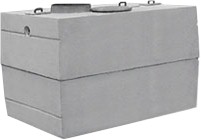Check out our new video describing our Whirlwind Linear Air Pump. Whirlwind Air Pumps are designed to be an energy efficient durable air pump perfect for providing reliable aeration.
The Septic Services Gazette
Archives: Education
This section of our blog is where we post helpful educational articles for septic system owners or for people who just have an interest in this subject. From time to time, we also post some basic tips and advice as well.
Whirlwind Linear Air Pump Video
April 11, 2016Categories: Education | Product Feature | Septic Systems
What is a Septic Tank
November 25, 2015Categories: Education | Septic Systems
 If you have a septic system then you already know you have a septic tank. But what is a septic tank and what does it do?
If you have a septic system then you already know you have a septic tank. But what is a septic tank and what does it do?
Here’s a brief review of the septic tank. Of course the septic tank is just one component of an entire septic system. There’s also piping, drainfield, typically a pump or aerator, and other accessories. But let’s just look at the septic tank to see what it does exactly.
First, all of your household wastewater exits your home through a pipe connected to your home’s plumbing system and flows into the septic tank. The septic tank is a buried watertight container and is typically made of concrete, fiberglass, or polyethylene. The tank holds the wastewater long enough to allow solids to settle out forming a sludge layer at the bottom of the tank. The solid waste is digested in the tank by aerobic and/or anaerobic bacteria. You can read more about this process here: Anaerobic vs Aerobic Bacteria. Oil and grease float to the surface as a scum layer.
Compartments and a T-shaped outlet in the septic tank prevent the sludge and scum from leaving the tank and traveling into the drainfield area but if allowed to buildup can cause problems that prevent the septic system from performing properly.
To prevent excessive buildup, sludge and floating scum need to be removed through periodic pumping of the septic tank. Regular inspections and pumping as necessary (generally every 3 to 5 years) are the best and cheapest way to keep your septic system in good working order.
How do I maintain my septic system?
November 9, 2015Categories: Education
The question many people have when they purchase a home with a septic system is, “how do I maintain my septic system?” Some people may not even think a septic system needs to be maintained. That attitude could lead to major headaches and expenses down the line. The primary maintenance task for a septic system owner is to have their septic tank pumped on a regular basis. So let’s briefly look at that.
You should have your septic system inspected at least every 3 years by a professional and your tank pumped as recommended by the inspector (generally every 3 to 5 years). Systems with electrical float switches, pumps, or mechanical components need to be inspected more often.
Your service provider should inspect for leaks and look at the scum and sludge layers in your septic tank. If the bottom of the scum layer is within 6 inches of the bottom of the outlet tee or the top of the sludge layer is within 12 inches of the outlet tee, your tank needs to be pumped.
Remember to note the sludge and scum levels determined by your service provider in your operation and maintenance records. This information will help you decide how often pumping is necessary.
Want to read more? Download the “Homeowner’s guide to Septic Systems”




 2016
2016 2016
2016














